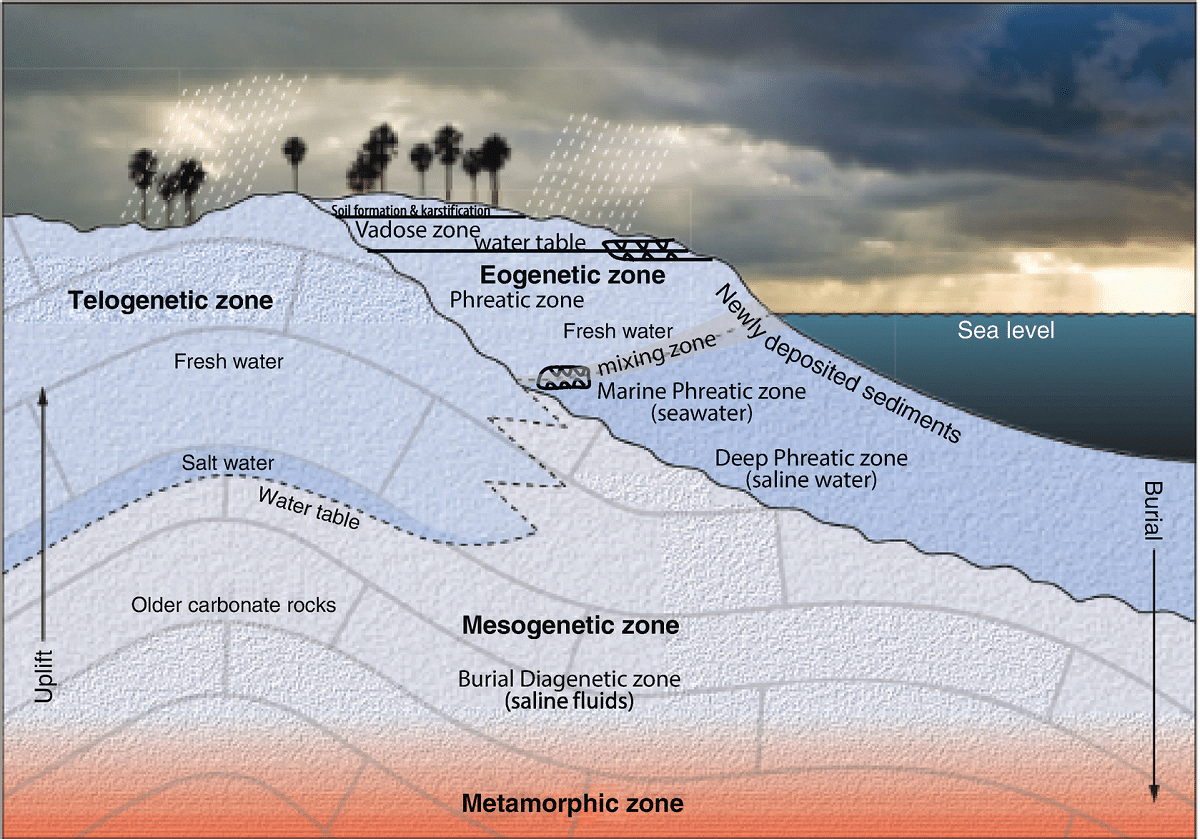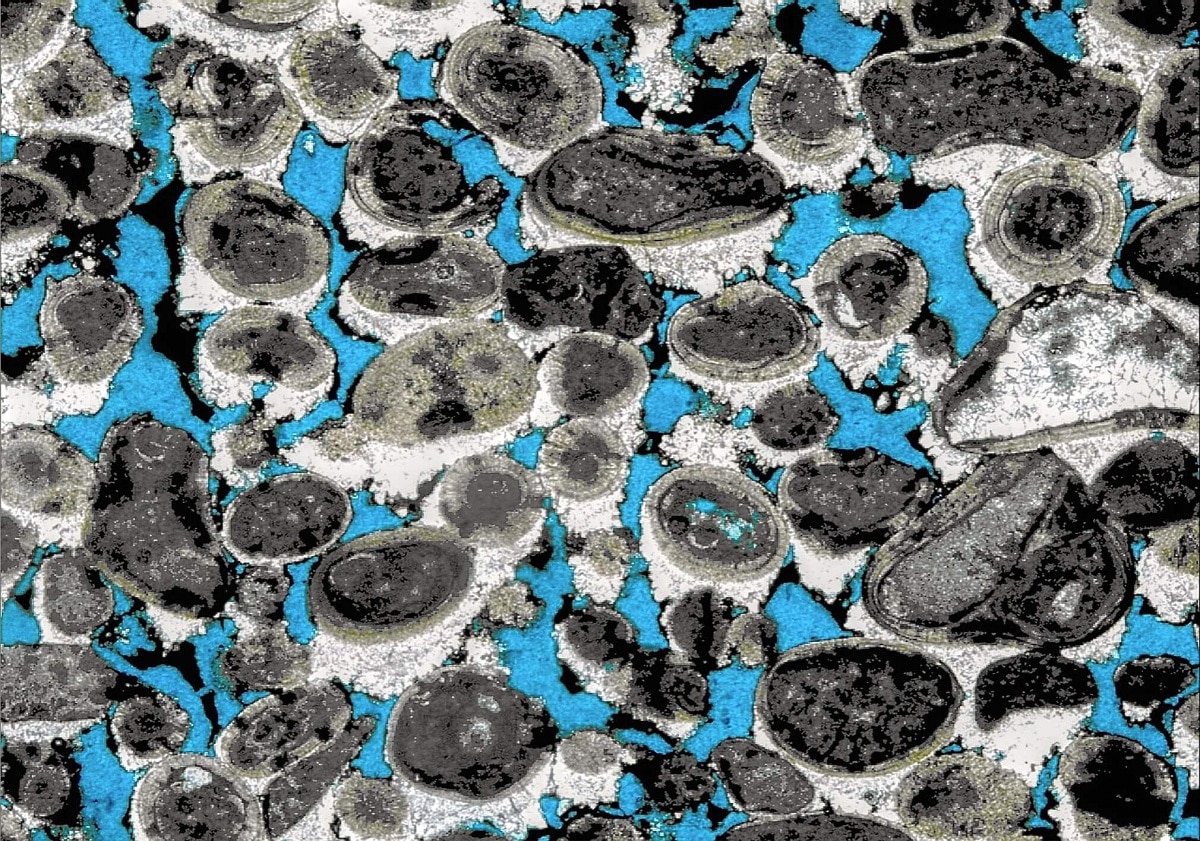
In geology there are many types of processes that occur in rocks and in the environment. One of them is the diagenesis. These are all the processes that sediments undergo during the period of time that begins with deposition after rock conversion. In these cases, we are talking about formation of sedimentary rocks and metamorphic rocks.
In this article we are going to tell you everything you need to know about diagenesis, its characteristics and curiosities.
What is diagenesis

Diagenesis is a term that is used in two ways: the first refers to the process of rearranging the components of a substance into a new or different substance. The second, and more common, use refers to all the processes that sediments go through or traverse during the time they begin to be deposited and continue until they become rock. It also refers to the additional chemical and physical processes that can change these rocks until they deteriorate. In geology, metamorphism is the change of rocks through geological processes that involve extreme temperatures and pressures.
Geologists classify rocks into three categories based on their formation environment. Sedimentary rocks are formed by transforming sedimentary layers into rocks, a process that requires a lot of time and pressure. Igneous rocks are formed by the cooling of lava or magma. Magma and lava are two terms for the same substance, but magma refers to lava that is still below the surface of the earth, and lava refers to lava that is now below the surface. Metamorphic rocks are igneous or sedimentary rocks that transform under extreme pressure, angular force, or temperature, but do not completely melt the rock and absorb it into the magma layer.
All the chemical and physical processes that sediments undergo when they are transformed into rocks, as well as a series of processes that affect the characteristics of rocks, are classified under the term diagenesis. These processes are primarily chemical processes in nature, but they also involve physical processes, such as delamination. Nevertheless, diagenesis does not include weathering, which belongs to another type of geological process.
Diagenetic processes

The diagenesis process can be very complicated and too much to list in an article of this size, but they fall into several categories. One of the most important types of diagenetic processes is the conversion of biomass in sediments to hydrocarbons, which is the beginning of the formation of crude oil and other fossil fuels. Fossilization is a process of diagenesis that occurs at the molecular level. When the individual cells of the body, especially certain compounds in the bones, are replaced by calcite and other minerals, the calcite and other minerals dissolve in water and in water. Deposition by filtering through a layer of sediment.
Diagenesis and cementation

Cementation is an important stage of diagenesis, which causes individual sediment particles to combine with each other. This is a chemical process in which dissolved minerals (such as calcite or silica) precipitate out of the water as they penetrate the sediment. The pressure of the overlapping layers of sediment leads to a process of physical diagenesis called compaction. This compaction, together with the filtration of mineral-rich water, causes the sediment particles to adhere to the dissolved minerals. As the sediment dries, the minerals harden and form natural cement. Sandstone is a common form of rock formed in this way. Many more complex stages of diagenesis can also occur, including changes in the composition of sedimentary layers through seepage of water carrying dissolved minerals.
Through this process, new minerals can be formed and sometimes certain minerals or compounds will leach out of the sediment and be replaced by other minerals or compounds. Petrification occurs during diagenesis and is the process by which sediments are transformed into rock. However, after petrification, diagenesis can continue.
Many diagenetic processes take thousands or millions of years. Geologists, paleontologists, anthropologists, and archaeologists analyze rocks to infer the diagenetic process that formed them. In this way, they learned a lot about the past, including information about the tectonic movement of the crust, environmental data, and other information about the rock formation and the history of the earth.
Lithification
Diagenesis includes lithification, the process of transforming loose sediments into solid sedimentary rocks. The basic lithification process includes compaction and cementation. The most common physical diagenetic change is compaction. As deposits build up, the weight of the overlapping material will compress the deeper deposits. The deeper the sediment is buried, the tighter and firmer it will be.
As the particles become more and more compressed, the pore space (open space between the particles) decreases significantly. For example, when clay is buried in materials several kilometers below, the volume of clay can be reduced by up to 40%. As the pore space contracts, most of the water deposited in the sediment is discharged.
Cementation is the most important process for the transformation of sediments into sedimentary rocks. It is a diagenetic change that involves the crystallization of minerals between individual sediment particles. Groundwater carries ions in solution. Gradually, these ions crystallize new minerals in the pore space, thus consolidating the waste.
Just as the amount of pore space is reduced during compaction, adding cement to the sediment will also reduce its porosity. Calcite, silica, and iron oxide are the most common cements. Identification of the adhesive material is usually a relatively straightforward matter. Calcite cement foams due to dilute hydrochloric acid. Silica is the hardest cement and therefore produces the hardest sedimentary rock.
I hope that with this information you can learn more about diagenesis and its characteristics.